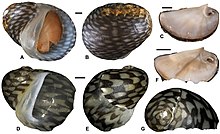별은 빛난다.
The Stars Shine| 별은 빛난다. | |
|---|---|
 DVD 커버 | |
| 에스레우치텐 다이 스턴 | |
| 연출자 | 한스 H. 제레트 |
| 작성자 |
|
| 생산자 | 헬무트 슈라이버 |
| 주연 | |
| 시네마토그래피 | 게오르크 크라우스 |
| 편집자 | 엘라 엔싱크 |
| 음악 기준 |
|
생산 동행이 | |
| 배포자 | |
출시일자 |
|
| 나라 | 나치 독일 |
| 언어 | 독일어 |
The Stars Shine(독일어: Es Leuchten die Sterne)은 한스 H. 제레트가 연출하고 제레트와 한스 한스가 작곡한 1938년 독일의 뮤지컬 리뷰다.[1][2][3]
시놉시스
젊은 비서가 출국해 베를린으로 건너가 여배우로서 일자리를 구한다.오류의 희극에서 그녀는 유명한 댄서로 오인되어 스타들이 즐비한 뮤지컬의 배역을 맡게 된다.이 줄거리는 1930년대의 많은 독일 영화, 스포츠, 연예계 스타들이 포함된 이 뮤지컬 리뷰 영화의 배경으로 작용한다.
배경
에스 레우치텐 다이 스턴은 헝가리계 유대인인 스테판 스체클리 감독이 연출한 1930년작 토비스 영화 다이 그로제 션수트(The Great Gearning)를 리메이크한 작품이다.[4]이 리메이크는 영화 스튜디오 안에서 버스비 버클리 스타일의 뮤지컬 세트장으로 만들어졌으며,[5] 수많은 무대 인물, 운동선수, 토비스 필름스 스타들의 출연이 특징이었다.[6]조지프 괴벨스는 선전부 장관으로 연예 영화를 나치 정권의 정치적 메시지를 전달하는 최고의 미디어로 여겼다.[7][8]에스 르우치텐 다이 스턴은 그 시대의 많은 독일 영화들이 그렇듯이 문화 단체로서 제3제국을 홍보하는 선전물 역할을 하기 위해 만들어졌다.[9][8][10][11]
해제
이 영화는 1938년 3월 17일 독일에서 처음 개봉되었다.이것은 4월 29일에 네덜란드에서 개봉되었고, 그 후 5월 20일에 미국에서 The Stars Shine으로 개봉되었다.[12]It was released in various countries under different titles: in Belgium as Als de sterren schitteren (Flemish) and as Quand les étoiles brillent (French); in Italy as Brillano le stelle; in Denmark as Funklende stjerner; in Greece as Lampoun t' asteria; in France as Les étoiles brillent and as Vedettes follies; and in the Netherlands as Parade der 스테렌과 스테렌파레이드.[10]이 영화는 워너 홈 비디오에 의해 2008년 7월 21일 독일 원작으로 DVD로 발매되었다.[2]
이 영화의 발췌문은 1938년 독일 텔레비전에서 상영되었고, 스튜디오에서는 라자나가 출연하였다.[13]
캐스트
- 무용수로서의 라 자나
- 한스 홀거 역의 에른스트 프리츠 푸르브링거
- 베르너 바우만 역의 프리드호프 므조엔
- 게바우어 역의 파울 베르호벤
- 브란트 역의 카렐 스테파넥
- 댄서 역의 파알 로슈버그(Paal Roschberg)
- 아서 슈뢰더 감독
- 스페인 가수 로지타 세라노 역
- 프로덕션 매니저로서 헤르만 파이퍼
- 보험사로서의 루돌프 쉰들러
- 칼라 월든 역의 베라 버그먼
- 마틸드 버크 역의 칼라 러스트
- 루디 고든은 매니저 크누츠 역을 맡았다.
- 엘리자베스 웬트 역의 리사 마르웬
- 크누츠 부인 역의 엘스터
- 비켈만 부인 역의 에바 틴슈만
- 크루세 역의 호르스트 비르
- 켈너 역의 에르빈 비겔
- 여배우 엘라 역의 에리카 스텐박
- 작사가로서의 하인츠 파이퍼
- 커트 미컬스키(Kurt Mikulski as Böckelmann, 분장가)
- 특집 출연
참조
- ^ Hal Erickson (2012). "Es Leuchten Die Sterne (1938)". Movies & TV Dept. The New York Times. Archived from the original on 3 November 2012. Retrieved 24 December 2010.
- ^ a b "Es leuchten die Sterne". OnlineFilmdatenbank (in German). Retrieved 24 December 2010.
- ^ "Es Leuchten Die Sterne". Allmovie. Retrieved 24 December 2010.
- ^ Waldman, Harry (2008). Nazi Films in America, 1933–1942. Jefferson, NC: McFarland. p. 159. ISBN 978-0-7864-3861-7.
- ^ McCormick, Richard W.; Guenther-Pal, Alison, eds. (2004). German Essays on Film. Volume 81 of German library. New York: Continuum. p. 309. ISBN 978-0-8264-1507-3.
- ^ Hull, David Stewart (1969). Film in the Third Reich: A Study of the German Cinema, 1933–1945. Berkeley: University of California Press. p. 144. ISBN 978-0-520-01489-3.
- ^ Goebbels, Joseph (1982). Taylor, Fred (ed.). The Goebbels Diaries 1939–1941 (illustrated ed.). London: H. Hamilton. ISBN 978-0-241-10893-2.
- ^ a b Romani, Cinzia (1992). Tainted Goddesses: Female Film Stars of the Third Reich. New York: Sarpedon. ISBN 978-0-9627613-1-7.
- ^ Kreimeier, Klaus (1999). The Ufa Story: A History of Germany's Greatest Film Company, 1918–1945. Volume 23 of Weimar and now Weimar and Now: German Cultural Criticism (reprint, illustrated ed.). Berkeley: University of California Press. p. 235. ISBN 978-0-520-22069-0.
- ^ a b Bock, Hans-Michael; Bergfelder, Tim, eds. (2009). The Concise Cinegraph: Encyclopaedia of German Cinema. New York: Berghahn Books. ISBN 978-1-57181-655-9.
- ^ Leiser, Erwin (1974). Nazi Cinema. Cinema two (illustrated ed.). New York: MacMillan Publishing Company. ISBN 978-0-02-570230-1.
- ^ Nugent, Frank S. (21 May 1938). "The Screen". The New York Times. Retrieved 24 December 2010.
- ^ Winker, Klaus (1994). Fernsehen unterm Hakenkreuz: Organisation, Programm, Personal. Volume 1 of Medien in Geschichte und Gegenwart (in German). Cologne: Böhlau. p. 231. ISBN 978-3-412-03594-5.


